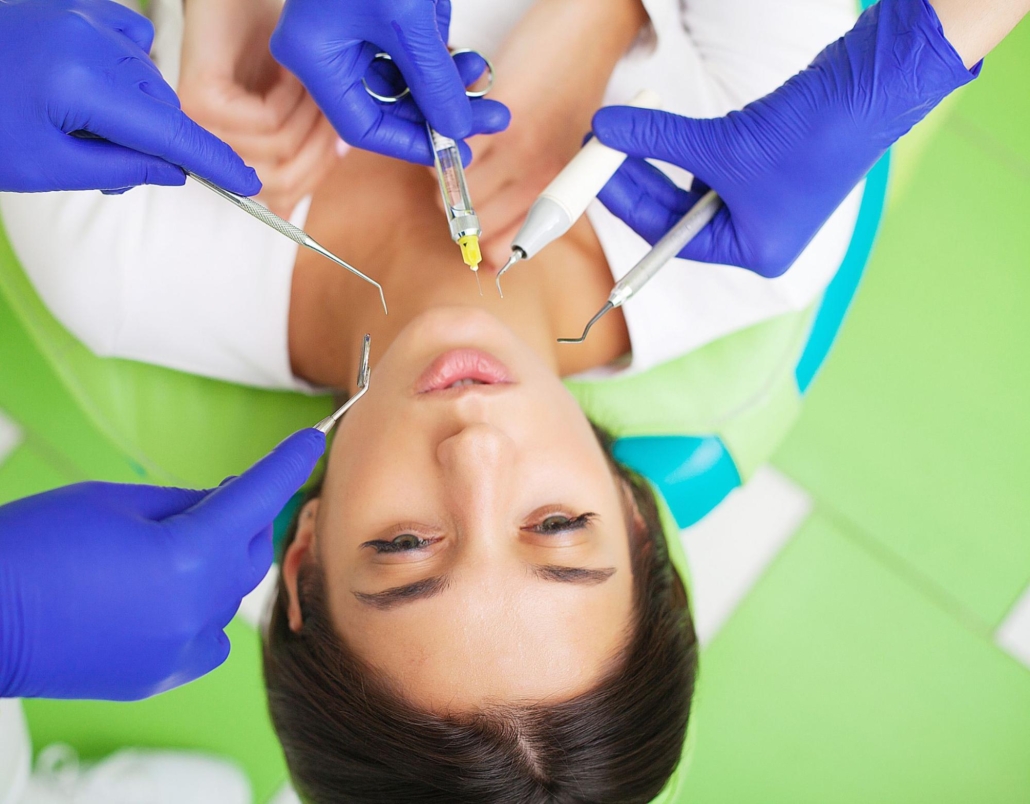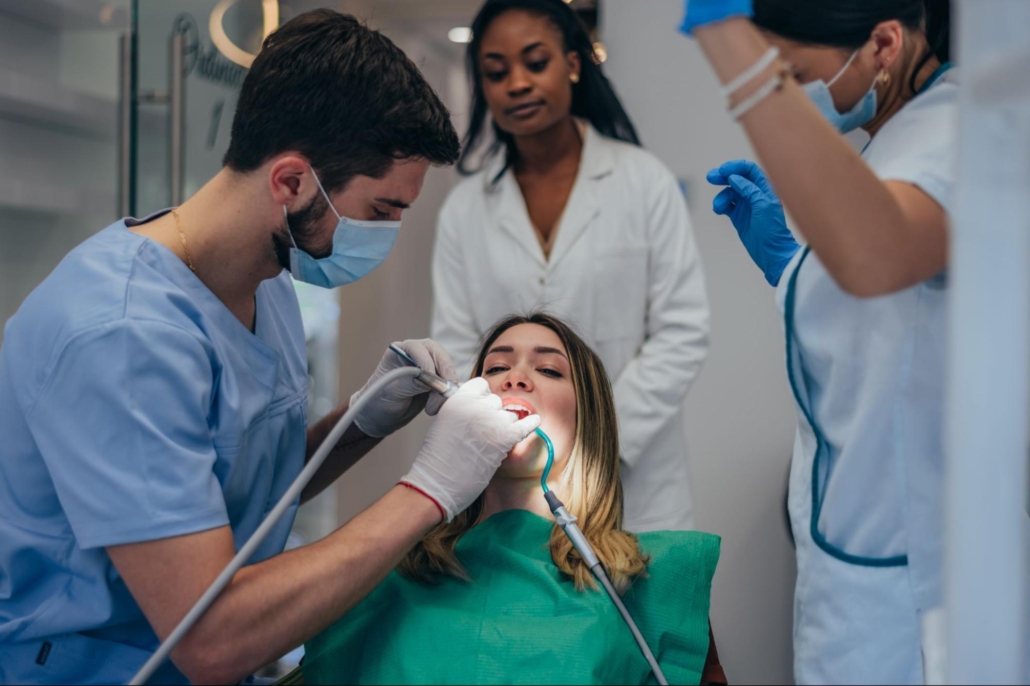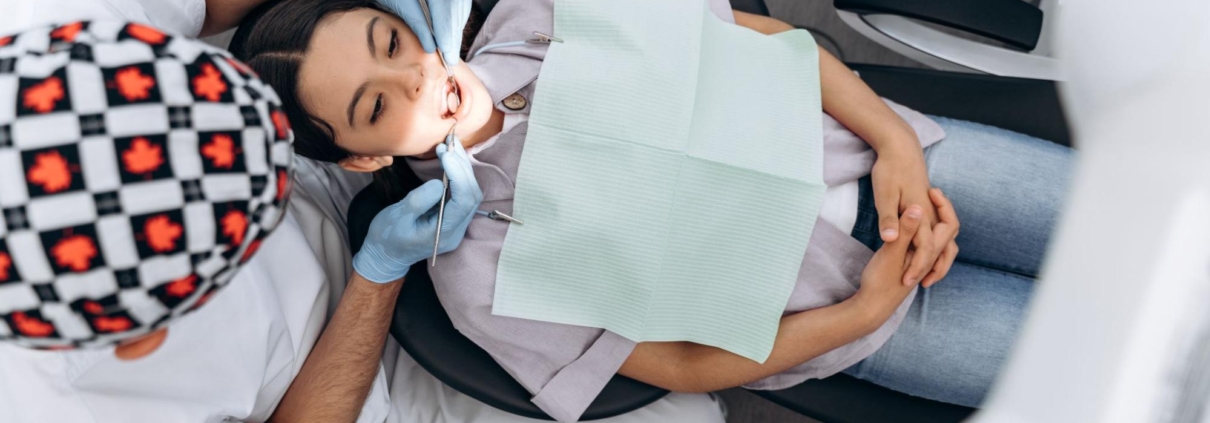What Is Sedation Dentistry?
Sedation dentistry is a specialized field within dental practice that focuses on using medication to help patients relax and remain calm during dental procedures. Those with low pain thresholds, those who fear or experience dental anxiety, and those who need extensive, potentially uncomfortable, time-consuming dental work will find it especially helpful. Depending on the patient’s needs and the intricacy of the dental procedure, sedation can range from gentle relaxation techniques to more profound levels of sedation. Comprehending sedation dentistry can alleviate worries and guarantee patients a more relaxed and satisfying dental encounter.
Understanding How Sedation Works in Dentistry
Sedation in dentistry involves carefully using medications and techniques to help patients relax and manage anxiety during dental procedures. Here’s a detailed look at how sedation works in dentistry:
Medication Administration
Different methods, including inhalation, oral ingestion, and intravenous (IV) injection, are used to administer sedative medications. The level of anxiety experienced by the patient, the difficulty of the treatment, and the level of sedation that is desired will all influence the medication and method selection.
Depression of the Central Nervous System (CNS)
Sedatives work by depressing the central nervous system, which helps induce relaxation and calmness. Thus, this process makes dental treatment more comfortable by lowering anxiety and pain perception through the action of particular neurotransmitters in the brain.
Patient Monitoring
One of the major responsibilities of dental professionals is to closely monitor patients during sedation to ensure safety and optimal comfort. Vital signs such as heart rate, blood pressure, and oxygen saturation are continuously monitored throughout the procedure.
Gradual Recovery
After the dental procedure, patients can gradually recover from sedation under supervision. Recovery times may differ depending on the type of sedation used; however, patients are usually advised to have a companion accompany them home.
Understanding how sedation works in dentistry provides valuable insights into the various techniques and medications that alleviate anxiety and discomfort during dental procedures. Dental practitioners can guarantee a more pleasant and comfortable patient experience by customizing sedation techniques to each patient’s needs and preferences. This will ultimately improve oral health outcomes and encourage regular dental care. Through ongoing education and research in sedation dentistry, practitioners can continue to refine and optimize these techniques, further enhancing the quality of patient care.
 Impact of Sedation in Dentistry
Impact of Sedation in Dentistry
Sedation, a game-changer in dentistry, has transformed the patient experience. Here are key ways in which sedation has influenced the field of dentistry:
1. Increased Patient Comfort
Sedation techniques empower patients, allowing them to feel more relaxed and comfortable during dental procedures, particularly those who experience anxiety or fear related to dental visits. By minimizing discomfort and anxiety, sedation enhances the overall patient experience, fostering a sense of control and encouraging regular dental care.
2. Improved Treatment Compliance
For individuals with dental phobias or those requiring complex treatments, sedation acts as a bridge, overcoming barriers to treatment. Patients are more likely to undergo necessary procedures when they feel calm and at ease, leading to significantly improved oral health outcomes and reduced dental complications.
3. Expanded Treatment Options
Patients can choose from a wider variety of treatments when under sedation. Comprehensive dental care is promoted by the safe and effective use of sedation during complex procedures that anxious patients may find difficult or impossible to tolerate.
4. Time Efficiency
Sedation can help optimize time management during dental appointments. Patients under sedation are more cooperative and less sensitive to discomfort, allowing dentists to work efficiently and complete treatments more quickly and effectively.
5. Enhanced Safety Protocols
Strict safety procedures and monitoring systems are used with contemporary sedation techniques to guarantee the highest level of patient safety. Dentists and dental staff receive specialized training in sedation administration and patient monitoring, minimizing risks associated with sedative use and instilling trust in the process.
6. Improved Patient Satisfaction
The introduction of sedation in dentistry has led to higher patient satisfaction levels and significantly improved the quality of life for many. Patients can undergo dental procedures with reduced stress and discomfort, resulting in positive experiences and greater confidence in seeking dental care.
7. Management of Special Needs Patients
Patients with special needs, such as children, people with impairments, or people who experience extreme anxiety, benefit significantly from sedation techniques. Sedation helps create a more comfortable and accommodating environment for these patients, facilitating necessary dental treatments.
Sedation has revolutionized dentistry by prioritizing patient comfort, improving treatment compliance, expanding treatment options, optimizing time efficiency, enhancing safety protocols, boosting patient satisfaction, and facilitating care for special needs patients. Dentists leverage these techniques to deliver high-quality, compassionate dental care and ensure positive experiences for patients of all backgrounds and needs.
 Preparing for Sedation at the Dentist
Preparing for Sedation at the Dentist
Preparing for sedation at the dentist involves several essential steps to ensure a safe and comfortable experience. Here’s what you should consider and do before your sedation appointment:
Consultation and Assessment
Before scheduling sedation, you’ll typically have a consultation with your dentist. During this visit, discuss your medical history, any current medications or supplements you’re taking, and any allergies you have. This information is vital for your dentist to assess your overall health and determine the most appropriate type of sedation aligned to your needs.
Follow Pre-Procedure Instructions
Your dentist will provide specific pre-procedure instructions to follow before your sedation appointment. This may include fasting (no food or drink) for a certain period before the procedure, particularly for IV sedation. Adhering to these instructions is crucial to ensure the effectiveness and safety of the sedation.
Arrange Transportation
Depending on the type of sedation used, you may be unable to drive home after the appointment. Arrange for a responsible adult to accompany you to the dentist’s office and drive you home afterward. This is especially important for sedation methods that can cause lingering drowsiness.
Wear Comfortable Clothing
Dress comfortably for your appointment, preferably in loose-fitting clothing. Avoid wearing tight or restrictive clothing that could be uncomfortable during and after the procedure.
Communicate Any Concerns
Don’t be afraid to ask your dentist any questions or concerns you may have before the sedation procedure. They can respond to your worries and offer assurance.
Post-Procedure Care
Discuss post-procedure care instructions with your dentist, especially regarding recovery and any restrictions or guidelines to follow after sedation, which may include dietary recommendations, activity restrictions, and procedures for managing any lingering effects of sedation.
Schedule Your Follow-Up Appointment
Schedule a follow-up appointment with your dentist to ensure proper healing and address any post-procedure concerns or questions you may have.
Consulting with your dentist about your medical history and concerns is crucial for a tailored sedation plan. Understanding the different types of sedation available can help you decide the best option for your needs. By following these steps and communicating openly with your dentist, you can prepare effectively for sedation at the dentist and have a safe, successful experience during your dental procedure. Sedation dentistry is designed to maximize patient comfort and minimize anxiety, allowing you to receive necessary dental care confidently.
Post-Procedure Care After Sedation
Following dental sedation, adhering to certain protocols is critical to promote seamless recovery and reduce the risk of complications. Here’s what you should do after sedation:
- Rest and Recovery: After your dental procedure, schedule the rest of your day for rest. Till the sedative’s effects have completely worn off, avoid physically demanding activities, operating machinery, or driving.
- Hydration and Nutrition: Drink plenty of fluids to stay hydrated and help flush out any lingering effects of the sedation medication. Stick to soft, easy-to-chew foods initially and gradually resume your regular diet.
- Avoid Alcohol and Smoking: Refrain from consuming alcohol or smoking for at least 24 hours after sedation. These substances can interfere with the effects of sedation and may delay healing.
- Follow Post-Procedure Instructions: Your dentist will give you personalized post-procedure instructions. These could include instructions on how to take prescribed medications as directed, care for the surgical sites, and manage pain or discomfort.
- Monitor for Side Effects: After sedation, be alert for any strange side effects or symptoms, such as heavy bleeding, ongoing pain, swelling, or infection symptoms. In case you encounter any alarming symptoms, get in touch with your dentist right away.
- Rest and Sleep Position: Elevate your head with pillows when sleeping to help reduce swelling and heal. This lets you relax, especially after extensive dental work or oral surgery.
- Attend Follow-Up Appointments: Ensure you attend scheduled follow-up appointments with your dentist to monitor your recovery progress and address any questions or concerns.
- Arrange Transportation: If you were given moderate or deep sedation, arrange for someone to drive you home from the dentist’s office and remain with you until the effects of the sedation have worn off.
Adhere to these post-sedation care guidelines and maintain close communication with your dentist to guarantee a safe and comfortable recovery following dental procedures involving sedation. Rest and proper care are necessary for a speedy recovery and a satisfying experience in general.
Understanding Sedation Techniques in Dentistry
In dentistry, sedation uses drugs and methods to make patients feel more relaxed and comfortable while receiving dental work. Sedation enhances patient comfort and safety and allows dentists to perform procedures more efficiently, benefiting both parties.
Sedation in dentistry plays a vital role in improving the dental experience for patients, particularly those with dental anxiety or fear. Sedation allows patients to receive necessary treatments in a less uncomfortable and stressful environment, reducing discomfort and anxiety. Patients should discuss sedation options with their dentist to choose the best strategy for their unique needs and preferences.
For more information on sedation techniques in dentistry and their benefits, visit Frederick Dreher DDS PC’s blog.






Leave a Reply
Want to join the discussion?Feel free to contribute!